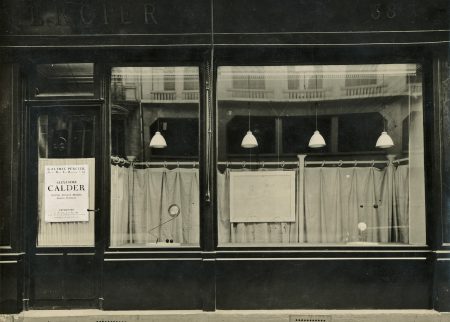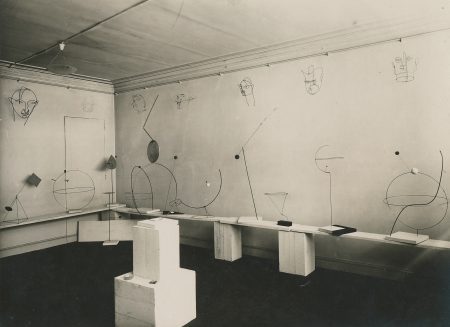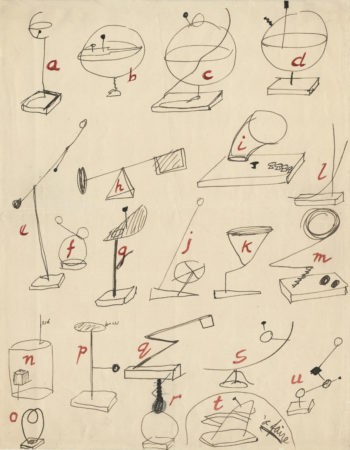Related documents 5






Galerie Percier, Paris. Alexandre Calder: Volumes–Vecteurs–Densités / Dessins–Portraits. Exhibition catalogue. 1931.
Fernand Léger, Introduction
Solo Exhibition CatalogueBrown, Don. “American Artist Wins Praise For His Work in Wire.” Chicago Tribune (Paris edition), 2 May 1931.
NewspaperHeilmaier, Hans. Neue Pariser Zeitung, c. May 1931.
NewspaperVauxcelles. Carnet de la Semaine, 2 May 1931.
NewspaperFierens, Paul. Journal des Débats, 15 May 1931.
NewspaperBazin. Amour de l’Art (June 1931).
MagazineCalder’s abstract work is presented for the first time in the exhibition “Alexandre Calder: Volumes–Vecteurs–Densités / Dessins–Portraits,” at Galerie Percier, Paris. Léger writes in the introduction to the catalogue:
Eric Satie illustrated byCALDER
Why not?
“It’s serious without seeming to be.”
Neoplastician from the start, he believed in the absolute of two colored rectangles. . . .
His need for fantasy broke the connection; he started to “play” with his materials: wood, plaster, iron, wire, especiallly iron wire. . . .a time both picturesque and spirited. . . .
. . . .A reaction; the wire stretches, becomes rigid, geometrical—pure plastic—it is the present era—an anti-Romantic impulse dominated by the problem of equilibrium.
Looking at these new works—transparent, objective, exact—I think of Satie, Mondrian, Marcel Duchamp, Brancusi, Arp—those unchallenged masters of unexpressed and silent beauty. Calder is of the same line.
He is 100% American.
Satie and Duchamp are 100% French.
And yet, we meet?
Calder reinstalls the Galerie Percier exhibition in his home at 14 rue de la Colonie. I am going to set the show up again, more or less as it was in the galerie.
Pablo Picasso arrives before the opening at Galerie Percier to preview the exhibition privately. He introduces himself to Calder.
Calder selects a sculpture from among the works exhibited at Galerie Percier and donates it to the recently founded Miejskie Muzeum Historji i Sztuki (Muzeum Sztuki w Lodzi), in Lodz, Poland. The work is later lost during World War II. (Calder 1966, 118)
“Calder: Mobiles / Abstract Sculptures” is held at the Julien Levy Gallery, New York. The exhibition announcement reprints Léger’s introduction to Calder’s 1931 Galerie Percier catalogue.
In response to Duchamp’s term “mobile,” Arp asks sarcastically, Well, what were those things you did last year [for Percier’s]—stabiles? Calder adopts “stabile” to refer to his static works.
Galerie Percier, Paris. Alexandre Calder: Volumes–Vecteurs–Densités / Dessins–Portraits. 27 April–9 May 1931.
Galerie Vignon, Paris. Calder: ses mobiles. 12–29 February 1932.
Following a visit in October of 1930 to Piet Mondrian’s studio, where he was impressed by the environmental installation, Calder made his first wholly abstract compositions and invented the kinetic sculpture now known as the mobile. Coined for these works by Marcel Duchamp in 1931, the word “mobile” refers to both “motion” and “motive” in French. He also created stationary abstract works that Jean Arp dubbed “stabiles.”